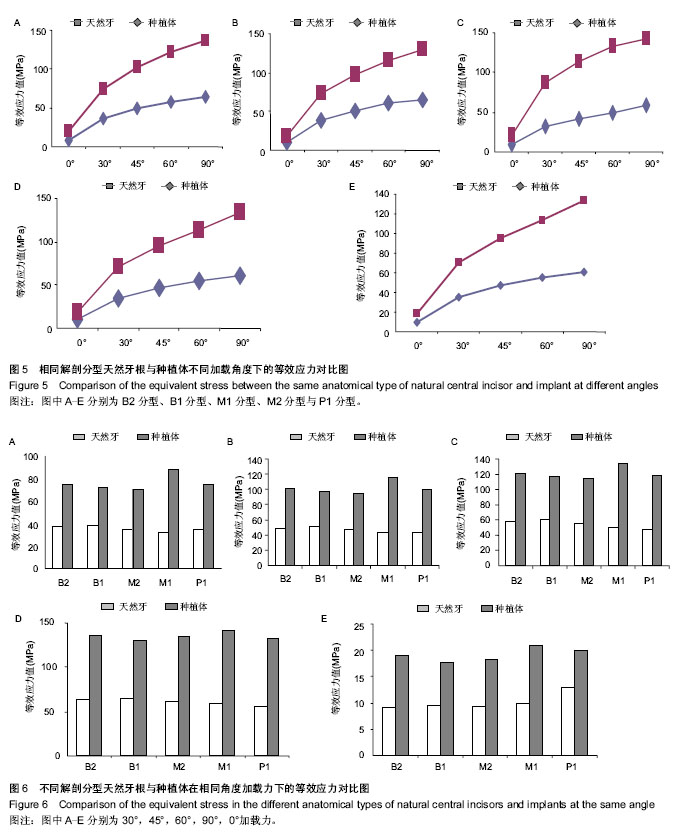中国组织工程研究 ›› 2015, Vol. 19 ›› Issue (16): 2545-2550.doi: 10.3969/j.issn.2095-4344.2015.16.016
• 组织工程口腔材料 tissue-engineered oral materials • 上一篇 下一篇
天然上颌中切牙与种植体应力规律的三维有限元分析
万林子1,孙 蕾1,吴熙凤2,林臻彦1,徐良伟3,刘朕哲1,徐多玲1,李 阳1,周延民4,高永波1
- 1遵义医学院附属深圳市龙岗中心医院,广东省深圳市 518116;2深圳市龙岗区人民医院,广东省深圳市 518172;3浙江工业大学,浙江省杭州市 310014;4吉林大学口腔医院,吉林省长春市 130021
Stress distribution in natural maxillary central incisor and implant: a three-dimensional finite element analysis
Wan Lin-zi1, Sun Lei1, Wu Xi-feng2, Lin Zhen-yan1, Xu Liang-wei3, Liu Zhen-zhe1, Xu Duo-ling1, Li Yang1, Zhou Yan-min4, Gao Yong-bo1
- 1Longgang District Central Hospital, Zunyi Medical College, Shenzhen 518116, Guangdong Province, China; 2Longgang District People’s Hospital of Shenzhen, Shenzhen 518172, Guangdong Province, China; 3Zhejiang University of Technology, Hangzhou 310014, Zhejiang Province, China; 4Hospital and School of Stomatology, Jilin University, Changchun 130021, Jilin Province, China
摘要:
背景:生物力学相容性是保证种植体与骨结合后长期稳定并行使功能的必要条件,因此,了解上颌中切牙与其周围骨组织应力应变分布情况对种植义齿修复尤为重要。 目的:根据天然牙5种不同解剖分型,探讨上颌中切牙牙根与种植体的应力分布规律。 方法:根据天然上颌中切牙5种不同解剖分型,通过UGNX、ANSYS等软件建立种植体及周围局部结构的三维有限元模型(B1、B2、M1、M2、P1),对种植体施加与牙长轴的夹角成0°、30°、45°、60°、90°的100 N静态荷载力,分析5类上颌中切牙牙根与种植体的应力分布情况。 结果与结论:5种分型中,天然中切牙与种植体等效应力随着加载力角度的增大而增大,种植体上升趋势高于天然牙。天然牙等效应力最大值集中在B1,最小值在M1,而种植体等效应力最大值在M1,最小值在M2。天然牙牙根等效应力有2%-31%的差距,种植体等效应力有4%-21%的差距,种植体的应力分布区间小于天然牙牙根的应力分布区间。说明种植体与天然牙随着咬合力角度的增大与受力呈正比,种植体所能承受的咬合力小于天然中切牙。
中图分类号:

.jpg)